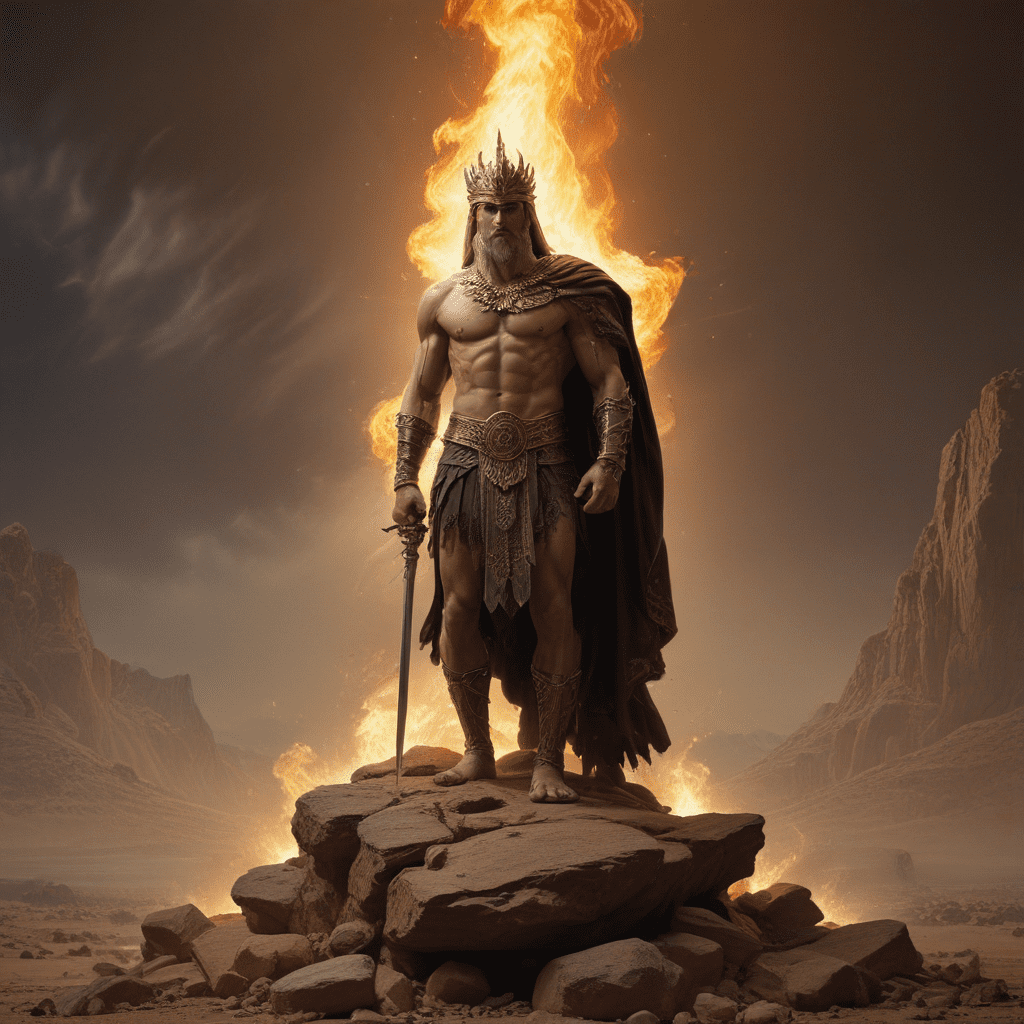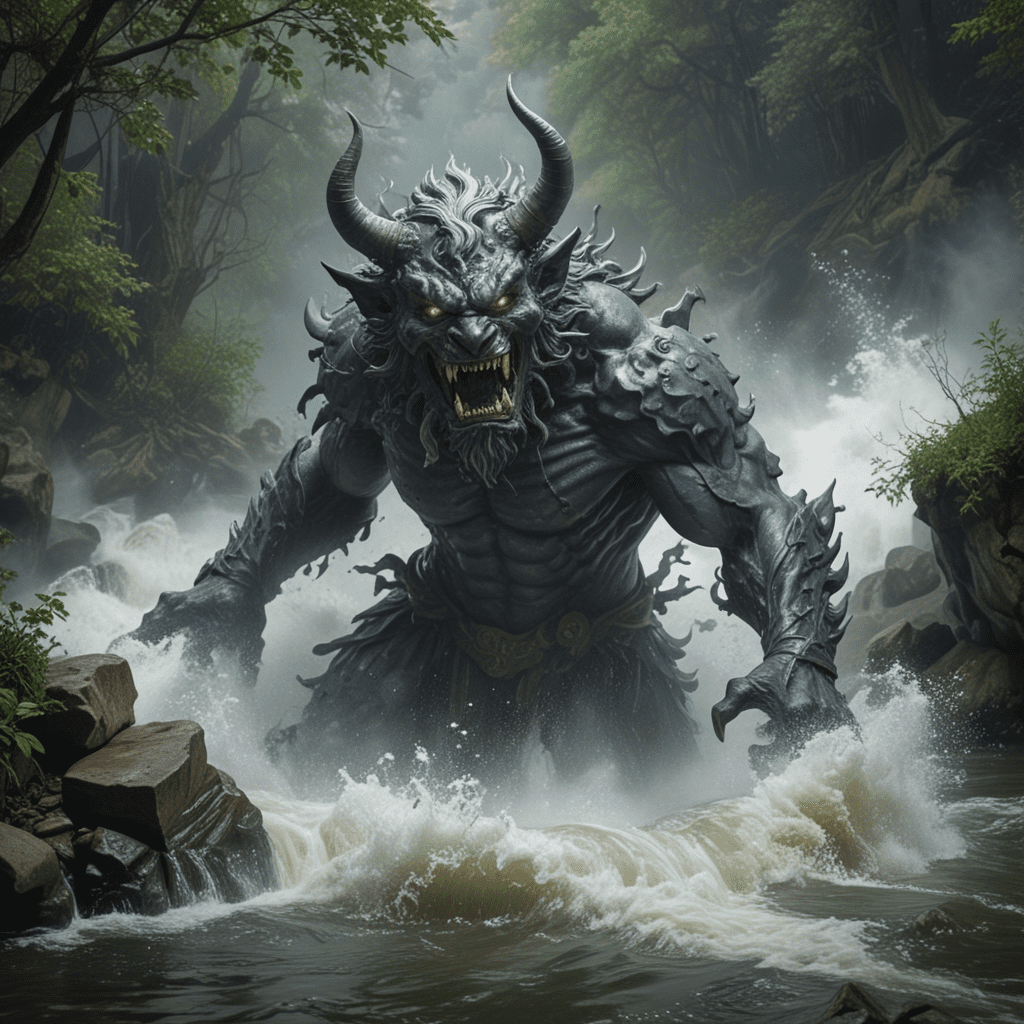The Myth of Erragal and Nergal: Brothers in Mesopotamian Mythology
Introduction: Gods of the Underworld and Pestilence
This article delves into the fascinating world of Mesopotamian mythology, exploring the interconnected destinies of two powerful deities: Erragal and Nergal. Both gods held sway over the underworld and were closely associated with pestilence and death, leaving an indelible mark on the Mesopotamian religious landscape.
Nergal: The God of the Underworld and War
Nergal, a prominent figure in the Mesopotamian pantheon, embodied both the destructive power of war and the somber dominion of the underworld. As the god of war, he was depicted as a fierce warrior, wielding a bow and arrow, and leading armies into battle. His association with death and the underworld cemented his position as a feared and respected deity.
Erragal: The God of the Underworld and Pestilence
Erragal, often intertwined with Nergal in Mesopotamian mythology, emerged as another potent deity associated with the underworld and pestilence. However, unlike Nergal's association with war, Erragal was primarily recognized as the bringer of disease and death, his influence extending beyond the battlefield.
The Myth of Erragal and Nergal: Exploring the Relationship
The myth of Erragal and Nergal unfolds as a captivating tale of brotherhood and rivalry. In this myth, the two gods descend into the underworld, embarking on a perilous journey that reveals the complex and intertwined nature of their relationship. Their descent into the realm of the dead serves as a metaphor for their shared dominion over death and the underworld.
6. The Meaning of the Myth: Theories and Interpretations
The myth of Erragal and Nergal has sparked numerous interpretations and theories, each offering unique insights into the symbolism and significance of the narrative. One prominent interpretation suggests that the myth reflects the cyclical nature of life, death, and regeneration. The descent of the gods into the underworld symbolizes the inevitable journey all mortals must undertake, while their return signifies the possibility of rebirth and renewal.
Another interpretation emphasizes the power dynamics between the two gods. Nergal, with his association with war, is often seen as the dominant figure, while Erragal, associated with pestilence, represents a more insidious and unpredictable force. The myth can be interpreted as a reflection of the constant struggle for power and control between these two aspects of the underworld.
Furthermore, the myth could be seen as an allegory for the human experience of facing mortality. The gods' descent into the underworld confronts them with the reality of death, forcing them to confront their own fears and vulnerabilities. Their ultimate return symbolizes the possibility of overcoming these challenges and finding meaning and purpose in the face of inevitable mortality.
7. Comparing and Contrasting Nergal and Erragal
While both Nergal and Erragal are associated with the underworld and pestilence, their roles and characteristics exhibit distinct differences. Nergal, the god of war, embodies a more active and forceful presence, wielding his power through violence and conquest. Erragal, on the other hand, represents a more passive and insidious force, bringing death and disease through unseen means.
Their association with different types of death also highlights their contrasting roles. Nergal's association with violent death reflects his connection to the battlefield, while Erragal's association with pestilence and disease signifies a more indiscriminate and widespread form of death. These differences underscore the multifaceted nature of death and the underworld, showcasing the diverse ways these concepts manifested in Mesopotamian mythology.
8. The Evolution of Their Mythology Over Time
The myth of Erragal and Nergal evolved and transformed over time, reflecting the changing social and political landscape of Mesopotamia. In earlier periods, Nergal held a more prominent position, likely due to the emphasis on war and conquest during those times. However, as Mesopotamian society transitioned towards a more centralized and urbanized structure, Erragal's role as the bringer of disease and death gained greater significance.
The evolving interpretations of the myth also reflect the changing perspectives on death and the underworld. While earlier interpretations focused on the fear and awe inspired by these concepts, later interpretations incorporated themes of acceptance, resilience, and even hope. This evolution demonstrates the dynamic nature of mythology and its ability to adapt and reflect the changing beliefs and values of society.
9. Conclusion: The Enduring Legacy of the Myth
The myth of Erragal and Nergal remains a captivating and enduring tale, offering insights into the Mesopotamian worldview and the complex relationship between life, death, and the underworld. The myth serves as a reminder of the universality of human experiences like mortality, fear, and the search for meaning in the face of the unknown. Its enduring legacy lies in its ability to evoke profound emotions and inspire contemplation on the fundamental questions of human existence.
10. FAQ
Who were Erragal and Nergal?
Erragal and Nergal were two powerful Mesopotamian deities associated with the underworld and pestilence.
What is the significance of their myth?
The myth of Erragal and Nergal explores themes of life, death, and the underworld, offering insights into the Mesopotamian worldview and the complex relationship between these concepts.
How did their roles and characteristics differ?
Nergal was associated with war and violent death, while Erragal was associated with pestilence and disease.
How did their mythology evolve over time?
The myth of Erragal and Nergal evolved to reflect the changing social and political landscape of Mesopotamia, with their roles and interpretations shifting over time.
What is the enduring legacy of the myth?
The myth of Erragal and Nergal remains a captivating and enduring tale, offering insights into the human experience and inspiring contemplation on the fundamental questions of human existence.




